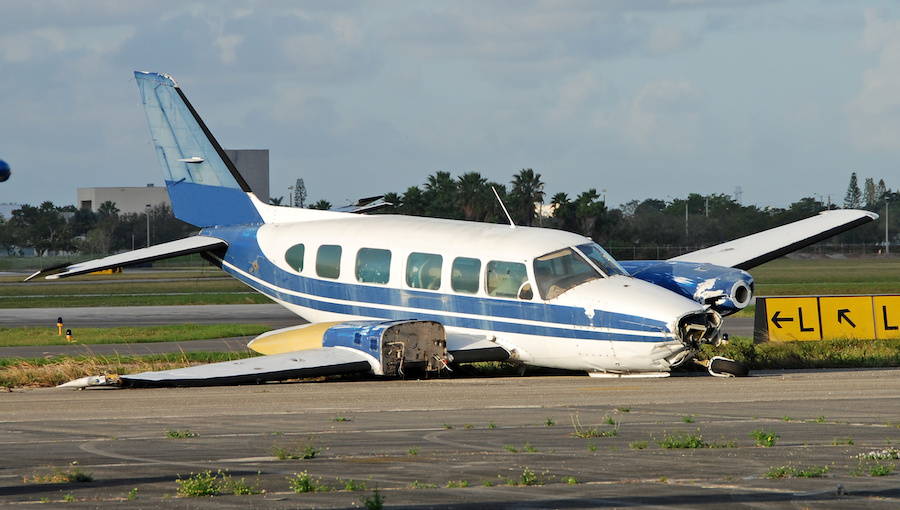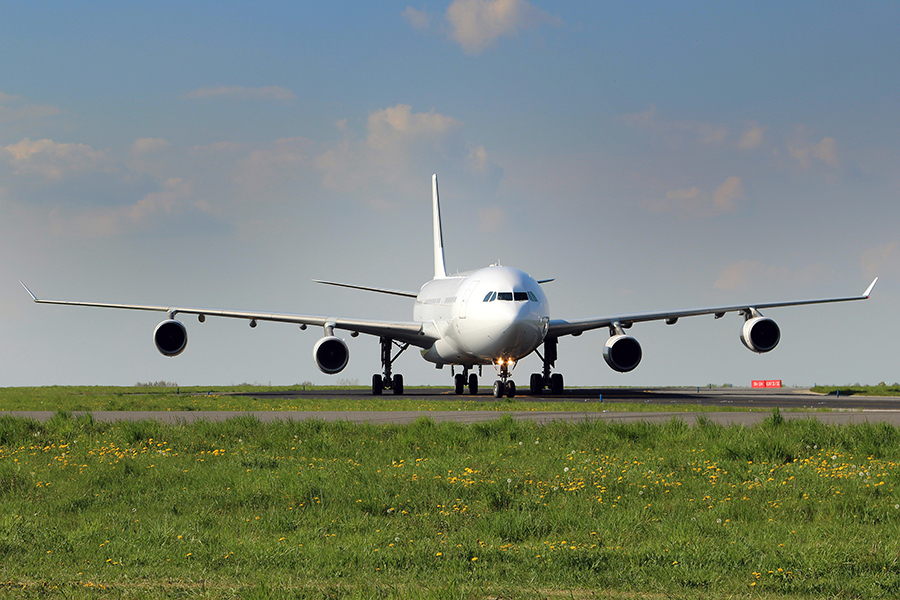The National Transportation Safety Board (NTSB) publishes annual safety statistics datasets, with the 2018 dataset the latest available. While sobering reading, the statistics give insight to factors we pilots can use to prevent harm to ourselves, our passengers, and the aircraft.
We’ll look at the top causes of personal flying accidents, emphasizing those with a high fatality rate. From that analysis, we’ll suggest rules we can all observe to help avoid harm.
What the statistics tell us
The 2018 general aviation accident statistics show that 1,103 accidents occurred in 18 categories. Of this number, 77%, or 848, were in the personal flying category, of which 156 were fatal. Four flight stages topped the accident list.
- Landing is the most accident-prone phase of flight, showing 312 accidents, including five fatal
- One hundred sixty-seven accidents occurred en-route, with 47 of those fatal
- Approach saw 96 accidents, with 34 fatalities, and
- The initial climb had 92 accidents, of which 33 were fatal
Across these four stages, the most common defining events were a loss of control, system malfunctions, controlled flight into terrain, and fuel-related causes. From these data, we can extract a few rules worthy of focus.
Loss of control
The FAA defines loss of control (LOC) as an unintended departure of an aircraft from controlled flight. The aircraft enters a flight status outside its normal flight envelope, rapidly developing into a stall or spin, surprising the pilot.
Rule #1 – Maintain Maximum Awareness
LOC occurs rapidly, requiring a quick and positive response. Four checks assist you in ensuring maximum awareness before and during flight:
- Personal status check.
- You should have achieved 8-hours of sleep before the flight.
- Be aware of the effect of over-the-counter and prescription medication. A 2011 FAA study showed of 1,553 deceased pilots, 42% tested positive for medication or drugs. Consult your doctor or aviation medical examiner (AME) when in doubt.
- Hydrate! Drink water before and during flight. Less than 2% dehydration impairs performance, psychomotor, and memory tasks.
- Piloting status check.
- The FAA flight risk assessment tool (FRAT) places a higher risk rating on pilots with less than 50-hours on the aircraft or avionics suite.
- Your risk elevates with less than 15-hours flown in the last 90-days.
- Dual instruction. Your flight awareness improves if you have received dual instruction in the past 90-days. Consider signing up for expanded envelope exercises (E3) training, specifically designed to assist pilots to avoid LOC.
- Elimination of distractions.
- The FAA highlights the need for self-briefing if flying alone and sterile cockpit procedures when with passengers. Be aware that using personal mobile devices on the flight deck while the aircraft is operating is prohibited.
Controlled Flight Into Terrain
Controlled flight into terrain (CFIT) refers to an unintentional collision with the ground, water, or an obstacle, while the aircraft is under positive control. Interestingly, 75% of CFIT accidents occur in daylight and 50% in visual conditions. The top two causes of CFIT are continuing a VFR flight into IMC conditions and wire strikes. In the former, all accidents were fatal.
Rule #2 – Avoid Complacency
CFIT occurs from an over reliance on automation, lack of research on your operating environment, a violation of minimums or limitations, and a departure from standard operating procedures. Four behaviors can markedly reduce your risk of CFIT:
- Ensure you have obtained a complete and accurate weather briefing before the flight.
- Research your operating environment to understand the aircraft performance you might expect, particularly when at high altitudes, operating into short or obstructed runways, or in mountainous terrain.
- Know your limitations.
- Situational awareness.
- Know your position and altitude relative to the surface in your immediate vicinity and planned route.
- Over reliance on automation can contribute to CFIT. Know your aircraft state. Slowly developing fuel imbalance and ice accretion will be apparent too late once the autopilot auto-disconnects. Balance hand flying and autopilot use to stay current on your aircraft’s operating state.
- Vigilance
- Be alert for changed or deteriorating weather states that don’t align with your pre-flight brief.
- Monitor your state of mind and fatigue levels.
- Monitor fuel levels and your consumption against the plan.
- Observe minima.
- Decisiveness
- Have a backup plan if something requires you to deviate from your planned flight.
- Be willing to instigate that plan decisively and early.
- Be wary of any personal bias toward flight plan continuation in changing circumstances.
Fuel Related Accidents
Accidents from fuel-related issues fall into fuel starvation or fuel exhaustion. The first refers to fuel remaining onboard but unable to reach the engine, and the second refers to empty tanks. Both can lead to engine failure, a forced landing, or controlled flight into terrain (CFIT). The NTSB considers that of the pilots involved in fuel mismanagement issues, in 98% of the cases overconfidence and complacency were major contributing factors.
Rule #3 – Education And Planning
Five simple rules assist you to avoid the dangers of fuel starvation or exhaustion:
- Know your aircraft’s fuel system
- Educate yourself on the correct operation of the fuel valves and tanks system. Many pilots could have avoided forced landings or declared emergencies by understanding how to transfer and cross-feed fuel correctly. Be aware of CG changes and any required sequencing for fuel use.
- Supervise the fuelling process
- Always supervise the fuelling of your aircraft to ensure it is the correct fuel grade and quantity. Once settled, carry out water drain checks during your preflight.
- Don’t ever trust gauges
- Always visually check the contents of your tanks. Never rely on fuel gauges, no matter how sophisticated they may appear.
- Perform proper preflight planning
- Always aim to land with a minimum of one hour of fuel remaining. Be sure the range and endurance are correct for the route and planned power settings. Consider what a diversion to an alternate airfield will require in fuel reserves.
- Declare a fuel emergency early
- Never be embarrassed to tell air traffic control (ATC) of your fuel problem. Early notification will assist ATC routing and expedited clearance, potentially preventing an accident.
System Malfunction
Accident statistics split system malfunctions into powerplant and non-powerplant categories, with powerplants the cause of over 40% of all malfunctions. Two-thirds of the fatal accidents caused by system malfunction occur in the powerplant category.
Gear and brakes, fuel, airframe, and electrical malfunctions make up the balance of the malfunction statistics, with approximately 70% of those accidents caused by gear and brake, and fuel system malfunctions.
Two broad contributory factors are maintenance and operations. You may consider maintenance outside your influence, yet you can mitigate against maintenance failures by diligent observation and operation.
Rule #4 – Disciplined Aircraft Management
Pilots can mitigate the risk from system failures through professional and considered behavior and observation. We’ve all seen the ‘kick-the-tires-and-light-the-fires’ type of pilot. Don’t be one of them.
- Post-maintenance
- With a post-maintenance aircraft, rather than feeling relaxed, I become very uneasy. Spend twice as long on your preflight and look for tools, rags, or objects that shouldn’t be there, inside and out.
- Accidents from crossed control cables are not unheard of following maintenance. Ensure the controls respond in the direction intended.
- Don’t blast off onto a hard IFR flight over mountainous terrain straight out of maintenance. Take the aircraft up and do a few easy laps to ensure everything is as it should be.
- Preflight
- A preflight is not a box-ticking exercise. Take time to inspect and manually operate all airframe systems, alert for restriction or noise. Look for popped rivets, buckled skins, or leaks. Controls need to move fully, freely, and in the correct sense.
- While some cowls restrict good engine inspections, check baffles and exhausts for cracking and looseness. Look up the exhaust with a torch to ensure the integrity of the exhaust baffles.
- What does the engine oil look and feel like? Are there leaks?
- Check for cracks in cylinders, loose magnetos, chafed wiring looms, and cracked or loose engine mounts.
- Spend 5 to 10 minutes scrutinizing the aircraft. If you feel distracted or pressured by time, slow down because that’s when you’ll miss something.
- Inflight
- Continual monitoring of the engine operation is crucial. If temperatures are trending higher, engine rpm slowly declining, or fuel flows fluctuating or decreasing, you have some warning signs requiring your action.
- Monitor the engine for rough running and note unexplained airframe vibration.
- Investigate if you have unexplained pitch or yaw, fluctuating ammeter or voltmeters, or popped circuit breakers.
- If fuel gauges suddenly go haywire, it might be the gauge, but it also might be the fuel tank. Take action.
A canceled flight, return to base, or a precautionary landing is inconvenient. However, I guarantee that those accident statistics would be considerably lower if we were all professional and disciplined enough to look for a problem and then take prompt and appropriate actions in response.
Conclusion
None of these rules or behaviors should be new or surprising to you.
- Maximum awareness
- Avoid complacency
- Education and planning, and
- Disciplined aircraft management
We’ve had these drummed into us as student pilots, yet the pressure to get to our destination, distraction, or creeping complacency is present on every flight.
In 2018, 156 of our flying colleagues died unnecessarily. We owe it to our families and passengers to follow these rules to ensure we get safely to our destination and come home again.




